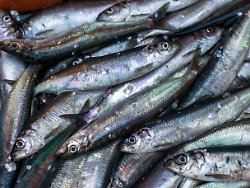Tuesday March 16, 2021
Brussels, London and Oslo
Agreement on catch quotas for the North Sea
German fishermen can sail to large parts of the North Sea again. Great Britain, the EU and Norway agreed on catches. These largely follow the expert recommendations – with the exception of cod.
The EU, the UK and Norway have agreed on catches for North Sea fish. In five out of six jointly managed stocks, the catch quotas are within the limits of what is considered sustainable by the International Council for the Exploration of the Sea (ICES), as announced by the EU Commission. This means that this year, compared to the total catches in 2020, a quarter less saithe, almost 2.5 percent less plaice and around 7.5 percent less herring can be caught, with haddock and whiting each increasing by around 20 percent .
According to a communication from the UK government, the catch for cod has not been reduced by the amount recommended by scientists. While this recommendation was minus 16.5 percent, the three negotiating partners agreed on minus ten percent.
Many fish stocks in the North Sea are in a rather poor condition. It is therefore primarily a matter of reconciling the interests of the fishing industry with environmental concerns. There was also an agreement with Norway on three bilateral agreements on the use of stocks. "Access to Norwegian waters is of great importance for our cutter fishery for saithe," said Federal Minister of Agriculture Julia Klöckner. With their catches of Arctic cod, the German deep-sea fleet in particular benefits from the mutual exchange of fishing opportunities.
. (tagsToTranslate) Economy (t) North Sea (t) EU (t) Great Britain (t) Norway (t) Fishing
